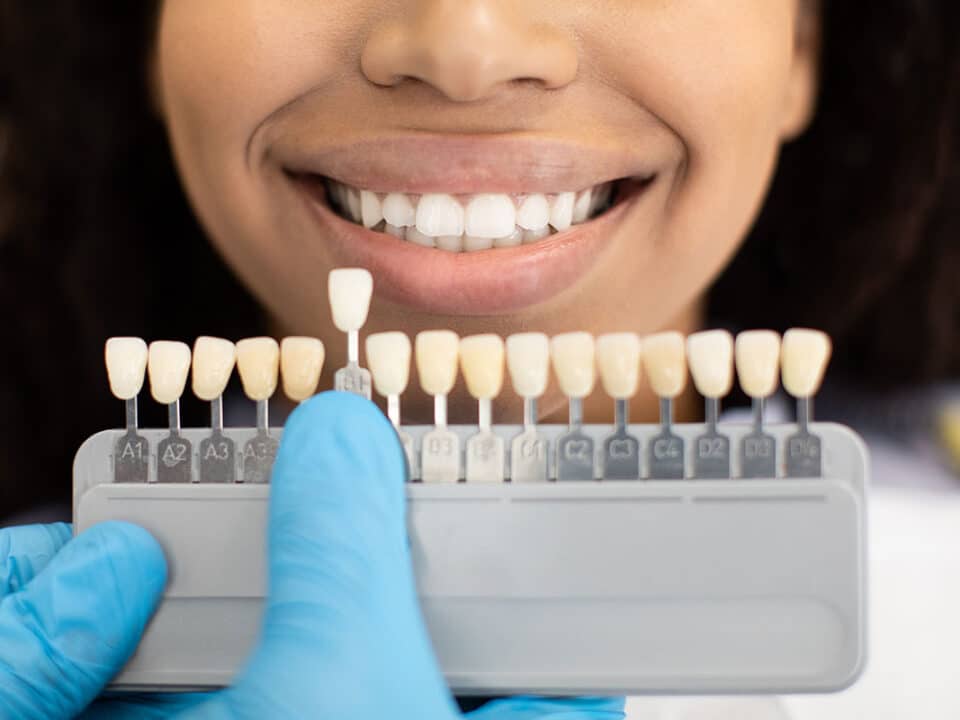Navigating dental care benefits can often be a daunting task, especially when it comes to understanding what services are covered under specific plans. The Canadian Dental Care Plan (CDCP) offers a comprehensive solution to this challenge for Canadian residents. Designed to make dental care more accessible and affordable, the CDCP provides coverage for various services ranging from routine check-ups and preventive treatments to complex restorative and surgical procedures.
Keep reading for an overview of the various dental services included under the CDCP in Ontario, ensuring you are well-informed about the benefits and coverage available to maintain your oral health effectively.
Table of Contents
Services covered by the CDCP
The Canadian Dental Care Plan (CDCP) covers a wide range of dental services to ensure comprehensive dental care for eligible residents in Ontario.
Here is a complete list of dental services typically covered by the CDCP:
Preventive Services:
Routine Examinations and Check-Ups: Regular visits to the dentist to assess and maintain oral health, often involving visual inspections and sometimes x-rays.
Scaling (Cleanings): The removal of plaque and tartar from teeth surfaces, especially below the gum line, to prevent gum disease.
Polishing: Smoothing and shining the tooth surfaces to remove stains and plaque not removed during scaling.
Fluoride Treatments: Application of fluoride to the teeth to strengthen enamel and prevent decay.
Sealants: Thin, protective coatings applied to the chewing surfaces of back teeth to prevent cavities.
X-Rays: Imaging tests that allow dentists to see inside teeth and beneath the gums to identify issues not visible during an examination.
Basic Restorative Services:
Fillings: Repairing cavities and minor fractures in teeth by filling them with materials like amalgam or composite resin.
Root Canal Treatments: Removing infected or damaged pulp from inside a tooth, then cleaning and sealing the space to save the tooth.
Prosthodontic Services:
Complete and Partial Removable Dentures: Custom-made appliances that replace missing teeth, restoring function and appearance.
Oral Surgery:
Tooth Extractions: Removal of a tooth that is damaged beyond repair or causing overcrowding or infection.
Surgical Extractions: More complex tooth removals, often involving impacted teeth or those that are not easily accessible.
Other Services:
Emergency Dental Treatments: Immediate care provided for urgent dental issues like severe pain, infections, or injuries.
Basic Oral Health Assessments: Initial evaluations to determine overall oral health and identify any necessary treatments.
Additional and Specialized Services (may require preauthorization):
Crowns: Caps placed over damaged or decayed teeth to restore their shape, size, and function.
Bridges: Dental prosthetics used to replace one or more missing teeth by anchoring to neighboring teeth.
Orthodontic Treatments (e.g., braces): Treatments to correct misaligned teeth and jaws using devices like braces or aligners.
Periodontal Treatments (e.g., treatment for gum disease): Procedures to treat gum disease, including deep cleanings, scaling, root planing, and sometimes surgery.
Oral Surgery Beyond Extractions (e.g., jaw surgery): Surgical procedures to correct a wide range of diseases, injuries, and defects in the mouth and jaw.
Prosthodontics Beyond Dentures (e.g., dental implants): Advanced procedures to replace missing teeth with artificial structures anchored in the jawbone.
Pediatric Dental Services:
Pediatric Examinations: Regular dental check-ups specifically designed for children to monitor and promote oral health.
Pediatric Cleanings and Fluoride Treatments: Cleanings and fluoride applications tailored for children’s teeth to prevent cavities.
Pediatric Fillings and Restorative Work: Repairing cavities and damage in children’s teeth using materials and methods suited for young patients.
Specialized Services:
Treatment of Oral Infections: Addressing bacterial, viral, or fungal infections in the mouth through medications or procedures.
Biopsies of Oral Tissues: Removal and examination of small tissue samples from the mouth to diagnose diseases.
Oral Cancer Screenings: Examinations to detect early signs of oral cancer, including visual inspections and palpation of mouth tissues.
Some services, especially more complex procedures, may require preauthorization, meaning prior approval based on your dentist’s recommendations. The list of covered services might be subject to updates or changes, so it’s always a good idea to check the latest details directly with the CDCP or your dental care provider.
The complete dental benefit guide is available here.

What if a treatment I need isn’t listed?
While the CDCP covers a wide range of treatments, some procedures will not be listed as automatically covered. If a dental treatment isn’t listed in the CDCP Dental Benefit Guide, that doesn’t automatically mean you won’t be able to receive any coverage for it.
If you need coverage, there are several steps you can take to address this situation:
Consult with Your Dentist
First, discuss the treatment with your dentist. They may have experience with similar cases and can guide whether the treatment might still be covered under specific circumstances or if alternative treatments are covered.
Check for Updates
The CDCP Dental Benefits Guide may be updated periodically. Ensure you have the most recent version of the guide, as new treatments and procedures can be added.
Preauthorization Request
Your dentist can submit a preauthorization request to the CDCP administrators for treatments not explicitly listed. This involves providing detailed information about the proposed treatment, its necessity, and expected outcomes. The administrators will review the request and determine if the treatment can be covered.
Contact CDCP Administrators
Reach out directly to the CDCP administrators for clarification. They can provide specific information about the coverage policies and any potential for including unlisted treatments. This can be done through the CDCP helpline or website.
Consider Secondary Coverage
If the CDCP does not cover the treatment, explore other potential coverage options. This may include provincial dental programs, employer-based insurance plans, or other government programs that might provide supplementary coverage.
Out-of-Pocket Costs
Discuss payment plans or financing options with your dental office if the treatment is essential and not covered by the CDCP. Many clinics offer flexible payment solutions to help manage out-of-pocket expenses.
Explore Alternative Treatments
Ask your dentist about alternative treatments that achieve similar results but are covered under the CDCP. Sometimes, different approaches can provide effective care while fitting within the coverage guidelines.
Appeals Process
Sometimes, there may be an appeals process if you believe a treatment should be covered. Inquire about this option with the CDCP administrators to see if an appeal is possible and what the process involves.
By following these steps, you can navigate the situation when a dental treatment isn’t listed in the CDCP Dental Benefit Guide, ensure you receive the necessary care, and understand your coverage options.
Yes, emergency dental treatments are covered to address urgent dental issues.
If a service isn’t listed, consult your dentist who can submit a preauthorization request to see if it can be covered under specific circumstances.
No, cosmetic procedures that are not medically necessary are typically not covered by the CDCP.
The frequency of covered cleanings can vary; typically, cleanings are covered every six months, but it’s best to confirm with your dentist.
CDCP coverage is generally available across Canada, but it’s important to verify specific coverage details if receiving treatment outside of Ontario.
Yes, both our Hamilton and St. Catharines clinic locations offer CDCP coverage to eligible patients.
Additional resources
Martindale Dental CDCP Information Page
8 Tips To Maximize Your CDCP Coverage
How much does CDCP dental care cost?
Does CDCP work with other forms of dental coverage?
What to Do If Your CDCP Coverage Doesn’t Include Your Treatment
Handling a Dental Emergency Using CDCP Coverage
CDCP Commonly Asked Questions Answered
How The CDCP Reduces Dental Health Disparities
Handling a Dental Emergency Using CDCP Coverage
Do Dental Clinics Benefit From Offering CDCP Coverage?
Best Practices for Dentists When Communicating the CDCP to Patients
Check us out on Facebook and Twitter for daily information about Oral Health from Martindale Dental, or visit our offices in Hamilton and St. Catharines.
Have more questions?
Please contact us for all inquiries or to book an appointment with one of our convenient clinic locations. We look forward to hearing from you.




